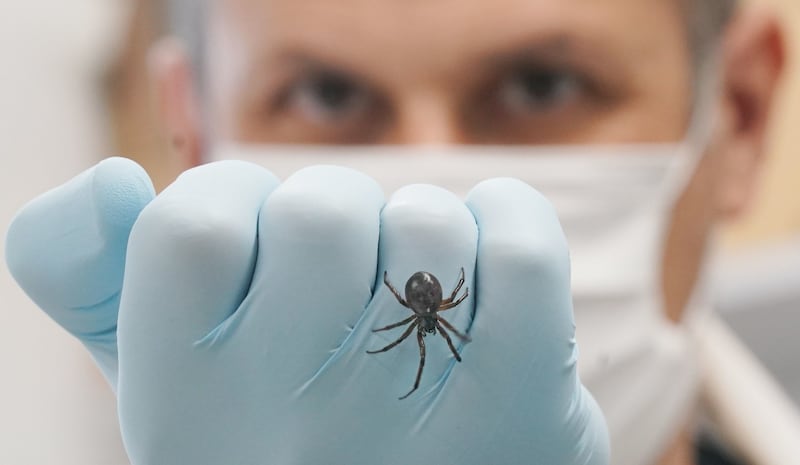Invasive false widow spiders are up to 230 times more poisonous than domestic Irish species, according to new research that helps explain their rapid spread throughout Ireland.
The findings shed light on the spider’s dominance – not only is its venom far more potent than any common northern European spider, but it can adapt its attacking behaviour to prevail in different “battle scenarios”. Exactly what this might mean for the survival of other species has yet to be determined.
The research was conducted by scientists at the Ryan Institute in NUI Galway and published in the international journal Toxins.
The false widow, or steatoda nobilis, which is originally from from Madeira and the Canary Islands, has spread rapidly in Ireland in recent years.
READ MORE
Its bite usually has a similar effect on humans as a bee sting but can often lead to more serious injury, sometimes requiring hospital treatment.
The strength of its poison, researchers say, helps explain how it tackles a range of much larger creatures including other spiders, lizards and even bats.

Over the past five years, the NUI team, led by Dr Michel Dugon, has studied a wide range of the its characteristics, including venom, bite symptoms, ecology and behaviour. During the study, the spider killed and ate 95 per cent of its opponents.
“The venom of the false widow kills at much smaller doses,” said Dr Dugon. “Essentially they have a chemical arsenal that is a lot stronger than native spiders. That gives them a competitive advantage because they are more toxic. So they can kill more prey using less venom and that means that they don’t have to spend as much time and as much energy to try and produce venom.”
The potential impact of the species on Ireland’s ecosystem is to be the focus of a follow-up study.
[ A night of hunting the false widow spider: ‘They are everywhere in this area’Opens in new window ]
“We think, but we haven’t quantified it yet, that the noble false widow has a negative impact on native species by actually bullying them away from their native environment,” said Dr Dugon.
The NUI research highlights other behaviours too – notably that when it has a low supply of venom, it is more selective about how to use it.
Scientists also demonstrate that in a battle, it will not inject venom randomly but target the most vulnerable body parts where neurotoxin is most efficient.
Dr John Dunbar, of the Ryan Institute’s Venom Systems Lab, a co-senior author of the study, said the spider has continued to surprise scientists as to its ability to become globally invasive.
“The tiniest amounts of venom, about a thousandth of a raindrop, can cause medically significant symptoms in humans that are about 250,000 times larger than them,” he said.
“Each new study brings us closer to understanding how exactly they are achieving their success.”
The noble false widow was first discovered in England in 1879. Since then it has increased in number and range, spreading to Scotland, Wales and Ireland.












